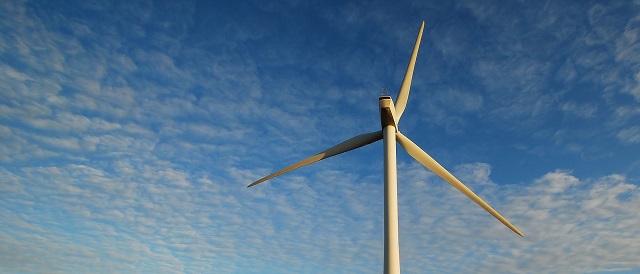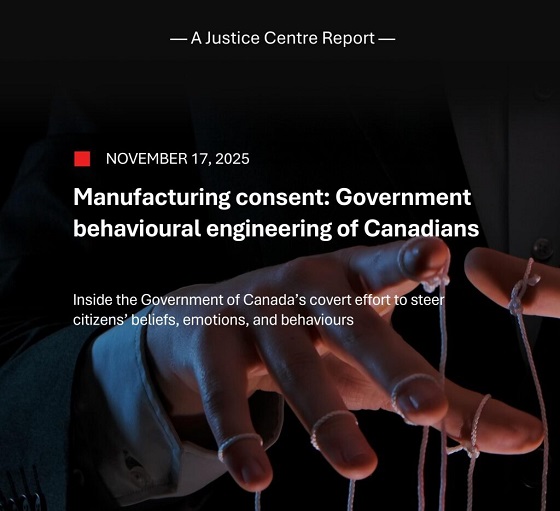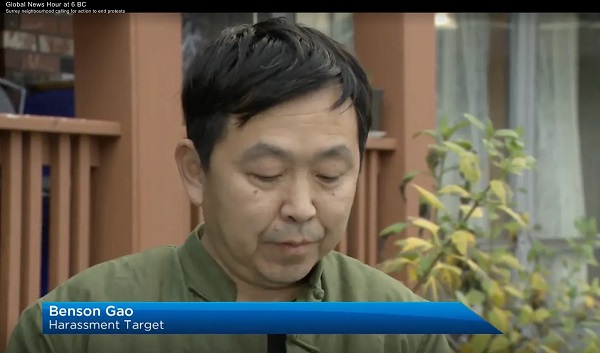Energy
Biden Admin Energy Policies Putting Americans Further At Risk In Potential War With China, Analysis Finds

 From the Daily Caller News Foundation
From the Daily Caller News Foundation
By NICK POPE
The environmental, social and corporate governance (ESG) movement is undermining U.S. energy security by artificially sapping demand for new refining projects, even though demand for fossil fuels and petrochemicals remains strong and could grow stronger in the event of a prolonged military conflict.
America’s energy systems and infrastructure may be currently unprepared to sustain a wartime economy in the event of a hot war with China, thanks in part to the Biden administration’s green policies, according to a new report published by the Heritage Foundation.
The report, published Thursday and titled “Chinese Handcuffs: Don’t Allow the U.S. Military to Be Hooked on Green Energy from China,” examines the state of American energy security and resilience in a potential war with China, taking stock of markets at home and overseas. The paper emphasizes the need for American policymakers to get ahead of any possible conflict with China by ensuring that the U.S. military has a robust and secure supply of traditional energy available, rolling back certain environmental regulations and targets pushed by the Biden administration, building more strategic energy infrastructure and bolstering existing commercial relationships with friendly countries, all of which may heighten deterrence with an adversarial country considering escalation with the U.S.
“Due to a heavy reliance on foreign sources, poor policy choices, and constraints on the transport of fuels, the U.S. military could be vulnerable,” the report states. “The risk is for localized fuel shortages, global supply disruptions, and Chinese economic coercion during a conflict driving significantly increased energy demands.”
Brent Sadler, the report’s author and a 26-year U.S. Navy veteran who now works as a senior research fellow for naval warfare and advanced technology at the Heritage Foundation, further emphasized that while steps to heighten America’s energy security will be expensive and require political will, they are necessary measures to ensure that the U.S. can transition to and sustain a wartime footing against near-peer competitors like China. Numerous pundits and ex-military personnel have suggested that China is getting ready for a war to start in the coming years, whether in Taiwan or in the South China Sea.
“America’s energy network is brittle in some regions and unable to adjust easily to surges in demand,” the report states. “In wartime, the consequences of such weaknesses could be an inability to sustain military combat operations and the inability of wartime industry to keep America safe. On the other hand, readiness for this possibility could be a significant advantage, enabling the United States to deter China by confronting it with a foe that is able to wage a prolonged war backed by a resilient wartime economy.”
The insistence of some federal and state officials — particularly Democrats — on transitioning the American economy to reliance on green energy poses a major problem for American security, the report asserts. Additionally, the environmental, social and corporate governance (ESG) movement is undermining U.S. energy security by artificially sapping demand for new refining projects, even though demand for fossil fuels and petrochemicals remains strong and could grow stronger in the event of a prolonged military conflict.
The Biden administration has pledged to invest at least $1 trillion over the next decade to advance its massive climate agenda, and federal agencies have pushed stringent regulations and taken other bureaucratic actions targeting the broader American energy sector. The administration is also looking to make the military a more climate-friendly organization, including by seeking to have the Department of Defense (DOD) transition its non-tactical vehicle fleet to electric models by 2030.
Additionally, the supply chains for many of the green energy technologies favored by the Biden administration are dominated by China, the report points out. Numerous energy and national security experts have highlighted that retiring existing energy infrastructure in favor of products reliant on China-dominated supply chains is likely to make America more vulnerable, particularly in the event of an acute geopolitical crisis.
One specific element of the American energy system in need of change is the Strategic Petroleum Reserve (SPR), a de facto emergency supply of oil stored in underground caverns along the Gulf Coast established in the 1970s amid an energy crisis, according to the report. Sadler recommends that policymakers begin to treat the SPR as a key tool for the military to use in the event of war, given China’s rise, as well as improving energy transportation infrastructure to more easily get SPR supply to coastal regions where the military can use it expediently.
The Biden administration has used the SPR as a tool for manipulating markets, as officials decided to release approximately 180 million barrels from the stockpile to bring down spiking energy costs ahead of the 2022 midterm elections. Several million of those barrels were sold to Chinese entities, and the administration has subsequently floated the possibility of again tapping into the SPR ahead of the pivotal 2024 elections while the reserve remains at its lowest levels in about 40 years, according to the U.S. Energy Information Administration.
Stadler calculated that the SPR’s current inventory would need a boost of about 55 million more barrels in order to single-handedly supply the amount of oil that U.S. forces used in Operation Desert Storm in 1990.
Deliberate policy choices and infrastructure upgrades are needed to make sure that the U.S. is able to effectively fight China in a prolonged conflict, Stadler contends in the report. Making these adjustments would help to provide an advantage over potential adversaries like China that rely on energy imports, according to Stadler.
Beyond SPR-related adjustments, the report also identifies an urgent need to unleash refiners and build out more pipeline capacity in light of China’s possible ability to launch highly disruptive cyber attacks against key pipeline and shipping infrastructure.
Additionally, Stadler emphasizes the importance of strengthening relationships with energy-rich countries that could be key sources of energy for American forces around the world in the event of a hot war with China. While several memoranda of understanding are in place with such countries, Stadler suggests that U.S. officials should move to elevate these agreements to treaty status to enhance America’s standing with those countries and decrease China’s ability to pressure third-party countries against assisting American forces.
“This is especially true for scenarios in which a major war disrupts overseas energy markets and normal shipping methods. Under such conditions, the U.S. will need more diverse and reliable overseas suppliers for military operations,” the report states. “Given the global impact that a war with China would have, the U.S. urgently needs to ensure that it has enough fuel stocks and crude oil to allow it time to adjust to a wartime footing.”
Neither the White House nor DOD responded immediately to requests for comment.
Energy
Carney bets on LNG, Alberta doubles down on oil

This article supplied by Troy Media.
Carney is promoting LNG as Canada’s future. Alberta insists the future still runs through oil
Prime Minister Mark Carney is a man in a hurry. He’s fast-tracking energy megaprojects to position Canada as a global LNG powerhouse, but Alberta’s oil ambitions and the private sector’s U.S. focus could throw his plan off course.
It’s all part of a broader federal strategy to reframe Canada’s energy priorities and show that his government is delivering economic results. Some say the motivation is political, with a fragile minority government and the potential for a snap election.
Others say it’s about legacy: Carney wants to be remembered as the prime minister who put Canada back on the global energy map.
That ambition came into sharper focus last week. On Thursday, he announced a second wave of projects being sent to the federal Major Projects Office, a body set up to fast-track infrastructure Ottawa sees as vital to national priorities.
The new list includes the Ksi Lisims liquefied natural gas project and the North Coast Transmission Line in British Columbia, along with a hydroelectric project in Nunavut. It also features nickel, graphite and tungsten mines in Ontario, Quebec and New Brunswick.
Ksi Lisims is the second LNG project Ottawa has submitted to the Major Projects Office.
Carney’s goal is clear, according to Lisa Baiton, president of the Canadian Association of Petroleum Producers. “With Ksi Lisims LNG and the related Prince Rupert Gas Transmission project joining LNG Canada Phase 2 on the major projects list, paired with Cedar and Woodfibre LNG, which are already under construction, Canada is on a path to become one of the top five LNG exporters in the world,” she said in a statement.
But not everyone is on the same page, especially Alberta.
The first batch of fast-tracked projects, announced two months ago, included a Montreal port expansion, a small modular nuclear plant in Ontario, mining projects in Saskatchewan and British Columbia, and LNG Canada Phase 2.
Alberta’s proposed oil export pipeline project was on neither list.
Premier Danielle Smith had said she hoped an agreement with Ottawa would be finalized by early last week to allow a new bitumen pipeline to proceed. That didn’t happen. But in a statement last Wednesday, her office said “sensitive” negotiations are continuing.
“Currently, we are working on a (memorandum of understanding) agreement with the federal government that includes the removal, carveout or overhaul of several damaging laws chasing away private investment in our energy sector, and an agreement to work towards ultimate approval of a bitumen pipeline to Asian markets,” the statement said.
Alberta argues such pipelines are critical if Canada is serious about energy diversification and global exports, particularly to Asia, where demand is rising. So far, those arguments don’t appear to have moved Carney.
With no federal deal in place, the industry is moving ahead with its own export agenda by doubling down on the U.S. market.
Enbridge has approved $1.4 billion in upgrades to its Mainline and Flanagan South pipelines, adding 250,000 barrels per day of capacity to move Canadian crude to the U.S. Midwest and Gulf Coast. The expansion is expected to come online in 2027.
The company also plans to test commercial demand in 2026 for a second phase of Mainline expansion that could add another 250,000 barrels per day.
Colin Gruending, Enbridge’s president of liquids pipelines, said the U.S. remains the most logical export market for Canadian oil, followed by Asia via the West Coast. The federal government’s goal of reducing reliance on U.S. buyers may take time.
Trans Mountain Corp., which moves oil sands crude to the Vancouver area for export, is reportedly also considering ways to increase volumes quickly and affordably.
Keystone XL, the pipeline project killed by former U.S. president Joe Biden in 2021, may also be back in play. The existing Keystone system, now owned by South Bow Corp., moves Canadian oil to U.S. Gulf Coast refineries. The cancelled XL expansion would have added new pipe and a more direct route south.
Whether Carney’s push makes Canada an LNG superpower or hits a wall of regional resistance and market reality, the energy and political maps are shifting.
Toronto-based Rashid Husain Syed is a highly regarded analyst specializing in energy and politics, particularly in the Middle East. In addition to his contributions to local and international newspapers, Rashid frequently lends his expertise as a speaker at global conferences. Organizations such as the Department of Energy in Washington and the International Energy Agency in Paris have sought his insights on global energy matters.
Troy Media empowers Canadian community news outlets by providing independent, insightful analysis and commentary. Our mission is to support local media in helping Canadians stay informed and engaged by delivering reliable content that strengthens community connections and deepens understanding across the country.
Business
Climate Climbdown: Sacrificing the Canadian Economy for Net-Zero Goals Others Are Abandoning

By Gwyn Morgan
Canada has spent the past decade pursuing climate policies that promised environmental transformation but delivered economic decline. Ottawa’s fixation on net-zero targets – first under Justin Trudeau and now under Prime Minister Mark Carney – has meant staggering public expenditures, resource project cancellations and rising energy costs, all while failing to
reduce the country’s dependence on fossil fuels. Now, as key international actors reassess the net-zero doctrine, Canada stands increasingly alone in imposing heavy burdens for negligible gains.
The Trudeau government launched its agenda in 2015 by signing the Paris Climate Agreement aimed at limiting the forecast increase in global average temperature to 1.5°C by the end of the century. It followed the next year with the Pan-Canadian Framework on Clean Growth and Climate Change that imposed more than 50 measures on the economy, key among them a
carbon “pricing” regime – Liberal-speak for taxes on every Canadian citizen and industry. Then came the 2030 Emissions Reduction Plan, committing Canada to cut greenhouse gas emissions to 40 percent below 2005 levels by 2030, and to achieve net-zero by 2050. And then the “On-Farm Climate Action Fund,” the “Green and Inclusive Community Buildings Program” and the “Green Municipal Fund.”
It’s a staggering list of nation-impoverishing subsidies, taxes and restrictions, made worse by regulatory measures that hammered the energy industry. The Trudeau government cancelled the fully-permitted Northern Gateway pipeline, killing more than $1 billion in private investment and stranding hundreds of billions of dollars’ worth of crude oil in the ground. The
Energy East project collapsed after Ottawa declined to challenge Quebec’s political obstruction, cutting off a route that could have supplied Atlantic refineries and European markets. Natural gas developers fared no better: 11 of 12 proposed liquefied natural gas export terminals were abandoned amid federal regulatory delays and policy uncertainty. Only a single LNG project in Kitimat, B.C., survived.
None of this has had the desired effect. Between Trudeau’s election in 2015 and 2023, fossil fuels’ share of Canada’s energy supply actually increased from 75 to 77 percent. As for saving the world, or even making some contribution towards doing so, Canada contributes just 1.5 percent of global GHG emissions. If our emissions went to zero tomorrow, the emissions
growth from China and India would make that up in just a few weeks.
And this green fixation has been massively expensive. Two newly released studies by the Fraser Institute found that Ottawa and the four biggest provinces have either spent or foregone a mind-numbing $158 billion to create just 68,000 “clean” jobs – an eye-watering cost of over $2.3 million per job “created”. At that, the green economy’s share of GDP crept up only 0.3
percentage points.
The rest of the world is waking up to this folly. A decade after the Paris Agreement, over 81 percent of the world’s energy still comes from fossil fuels. Environmental statistician and author Bjorn Lomborg points out that achieving global net-zero by 2050 would require removing the equivalent of the combined emissions of China and the United States in each of the next five
years. “This puts us in the realm of science fiction,” he wrote recently.
In July, the U.S. Department of Energy released a major assessment assembled by a team of highly credible climate scientists which asserted that “CO 2 -induced warming appears to be less damaging economically than commonly believed,” and that aggressive mitigation policies might be “more detrimental than beneficial.” The report found no evidence of rising frequency or severity of hurricanes, floods, droughts or tornadoes in U.S. historical data, while noting that U.S. emissions reductions would have “undetectably small impacts” on global temperatures in any case.
U.S. Energy Secretary Chris Wright welcomed the findings, noting that improving living standards depends on reliable, affordable energy. The same day, the Environmental Protection Agency proposed rescinding the 2009 “endangerment finding” that had designated CO₂ and other GHGs as “pollutants.” It had led to sweeping restrictions on oil and gas development and fuelled policies that the current administration estimates cost the U.S. economy at least US$1 trillion in lost growth.
Even long-time climate alarmists are backtracking. Ted Nordhaus, a prominent American critic, recently acknowledged that the dire global warming scenarios used by the Intergovernmental Panel on Climate Change rely on implausible combinations of rapid population growth, strong economic expansion and stagnant technology. Economic growth typically reduces population increases and accelerates technological improvement, he pointed out, meaning emissions trends will likely be lower than predicted. Even Bill Gates has tempered his outlook, writing that climate change will not be “cataclysmic,” and that although it will hurt the poor, “it will not be the only or even the biggest threat to their lives and welfare.” Poverty and disease pose far greater threats and resources, he wrote, should be focused where they can do the most good now.
Yet Ottawa remains unmoved. Prime Minister Carney’s latest budget raises industrial carbon taxes to as much as $170 per tonne by 2030, increasing the competitive disadvantage of Canadian industries in a time of weak productivity and declining investment. These taxes will not measurably alter global emissions, but they will deepen Canada’s economic malaise and
push production – and emissions – toward jurisdictions with more lax standards. As others retreat from net-zero delusions, Canada moves further offside global energy policy trends – extending our country’s sad decline.
The original, full-length version of this article was recently published in C2C Journal.
Gwyn Morgan is a retired business leader who has been a director of five global corporations.
-

 Alberta2 days ago
Alberta2 days agoAlberta Offers Enormous Advantages for AI Data Centres
-

 Alberta2 days ago
Alberta2 days agoNational Crisis Approaching Due To The Carney Government’s Centrally Planned Green Economy
-

 Alberta2 days ago
Alberta2 days agoCalgary mayor should retain ‘blanket rezoning’ for sake of Calgarian families
-

 Bruce Dowbiggin2 days ago
Bruce Dowbiggin2 days agoSports 50/50 Draws: Make Sure You Read The Small Print
-

 Carbon Tax21 hours ago
Carbon Tax21 hours agoCarney fails to undo Trudeau’s devastating energy policies
-

 COVID-192 days ago
COVID-192 days agoNew report warns Ottawa’s ‘nudge’ unit erodes democracy and public trust
-

 Agriculture1 day ago
Agriculture1 day agoFederal cabinet calls for Canadian bank used primarily by white farmers to be more diverse
-

 Censorship Industrial Complex2 days ago
Censorship Industrial Complex2 days agoQuebec City faces lawsuit after cancelling Christian event over “controversial” artist








